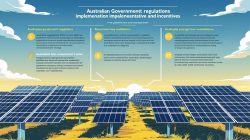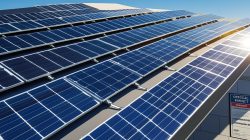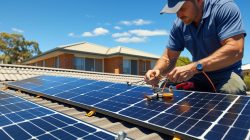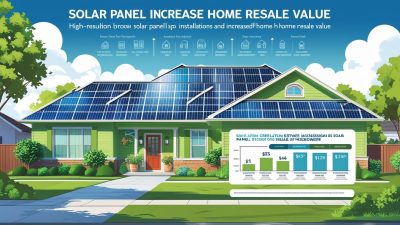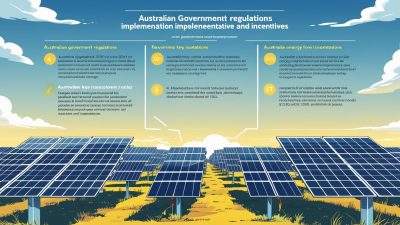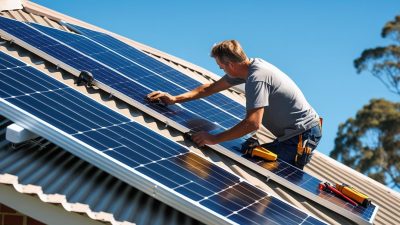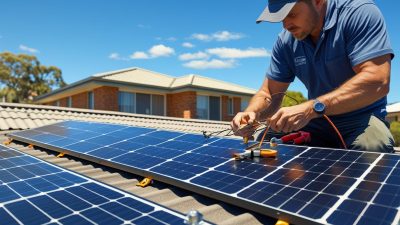Environmental Impact of Solar Farms in Australia
Bloggerbanyumas.com – Environmental Impact of Solar Farms in Australia The landscape of energy production and consumption in Australia is undergoing significant transformation, with solar energy taking center stage. As the country targets aggressive renewable energy goals for the coming years, particularly by 2025, the growth of solar farms has become a key part of Australia’s commitment to reducing carbon emissions. However, despite the promise of clean, renewable energy, the environmental impacts of solar farms have raised concerns among environmentalists, scientists, and local communities. This article aims to offer an in-depth analysis of these impacts, exploring the multifaceted consequences of solar farm development across Australia’s diverse regions.
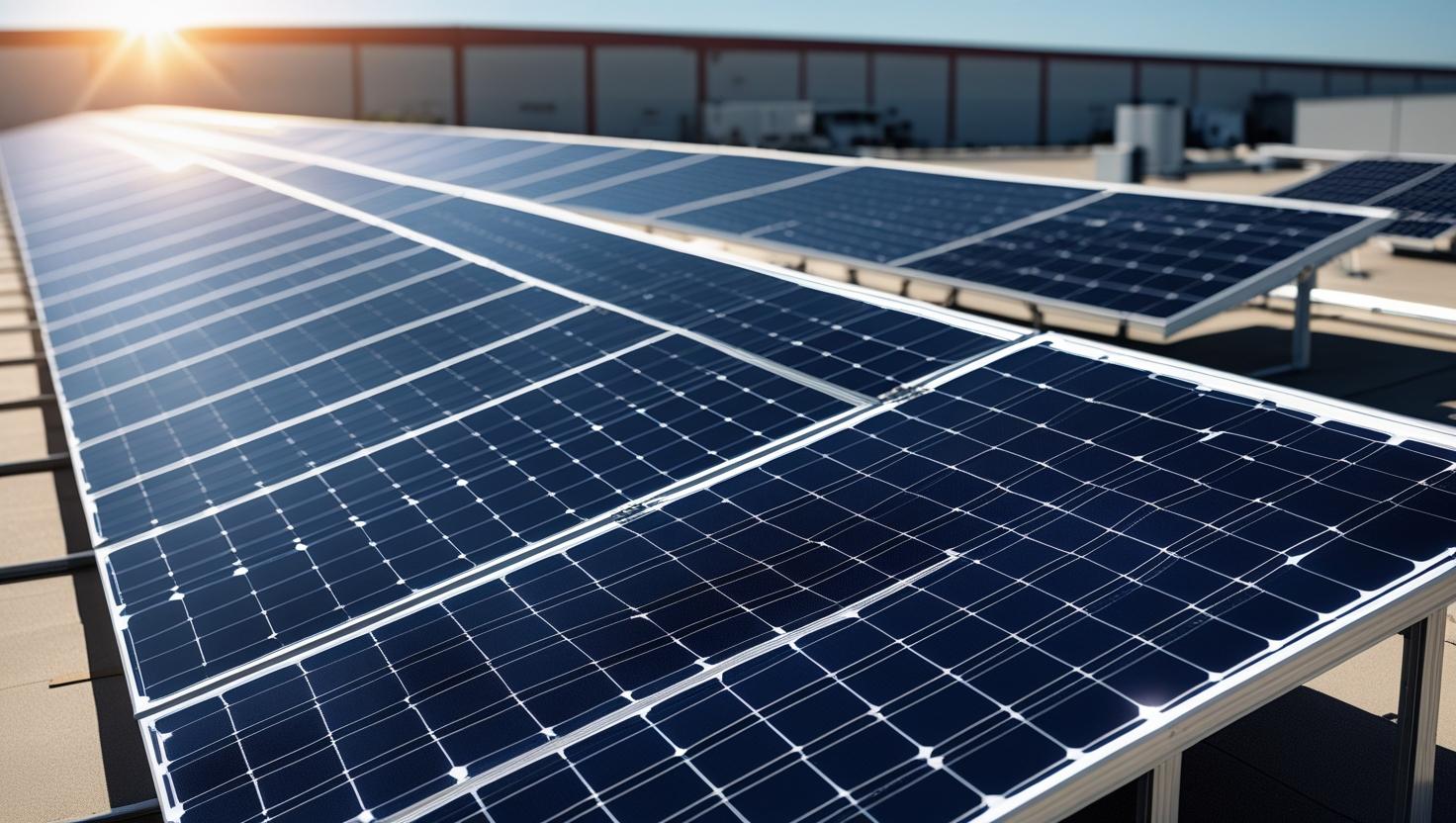
As Australia strives to meet its renewable energy targets, particularly in the face of climate change challenges, understanding the environmental implications of solar farm expansion is critical. From habitat disruption to land use changes and resource consumption, solar energy infrastructure poses complex challenges that require careful management. In this article, we explore the various aspects of solar farm development, focusing on its direct and indirect environmental effects, the ways these effects are being mitigated, and the future sustainability of large-scale solar projects.
Understanding the Environmental Impacts of Solar Farms
1. Land Use and Habitat Disruption
One of the most significant concerns surrounding solar farms is their impact on land use. The establishment of large solar installations requires vast areas of land, which can disrupt local ecosystems. In Australia, much of the land used for solar farms is typically located in rural and remote areas, which may include important habitats for native species.
- Loss of Natural Habitats: Solar farms can encroach upon pristine natural environments, potentially displacing wildlife and reducing biodiversity. The construction of these farms can lead to the clearing of large areas of vegetation, which may disrupt critical habitats for native species, particularly in areas where flora and fauna are already under pressure due to climate change or human activities.
- Alteration of Water and Soil Quality: The installation of solar panels and infrastructure can lead to changes in water runoff patterns and soil erosion. In some cases, the land used for solar farms may have been used for agriculture or grazing, and the change in land use can affect local water resources and soil health, especially if proper drainage and soil conservation measures are not implemented.
- Impact on Agricultural Land: While some solar farms are located on previously cleared agricultural land, the conversion of this land for solar use can compete with food production, particularly in areas where agricultural land is already limited. This is an especially important consideration as Australia grapples with food security and climate-induced agricultural challenges.
2. Energy Consumption and Resource Use
While solar energy itself is a clean, renewable source of power, the process of manufacturing, installing, and maintaining solar panels involves resource consumption and energy use, which can have environmental consequences. In Australia, as in many other parts of the world, the lifecycle of solar panel production can generate carbon emissions, although at much lower levels than fossil fuel-based energy sources.
- Manufacturing and Transportation Emissions: The production of solar panels involves the extraction of raw materials such as silicon, aluminum, and rare earth metals, as well as energy-intensive manufacturing processes. These activities contribute to the carbon footprint of solar technology, even though the operational phase of a solar farm generates minimal emissions. Additionally, the transportation of these materials and panels to installation sites can also have a significant environmental impact, particularly if the farms are located in remote areas that require extensive transport infrastructure.
- Panel Disposal and Recycling: The environmental impact of solar panels doesn’t end when they are installed. The disposal of panels after their operational life raises concerns about waste management. Although solar panels are designed to last for decades, their eventual disposal can contribute to landfill waste if not properly recycled. Efforts are underway to improve the recycling process for solar panels in Australia, but the infrastructure for large-scale recycling remains underdeveloped.
- Water Usage in Solar Farms: Another often-overlooked environmental impact of solar farms is water usage. While solar farms do not require significant water to generate electricity, certain types of solar technologies, such as concentrated solar power (CSP), require water for cooling purposes. In Australia’s dry regions, water use for these technologies can compete with other critical water needs, including agricultural irrigation and drinking water supplies.
Mitigation Strategies for Minimizing Environmental Impact
As the solar industry continues to grow in Australia, efforts are being made to mitigate the environmental impact of solar farms. Various strategies are being employed to reduce habitat disruption, resource consumption, and long-term waste issues.
1. Solar Farms and Biodiversity Conservation
To minimize the impact on local wildlife and biodiversity, many solar farms in Australia are incorporating strategies to protect and enhance ecosystems. These efforts include:
- Environmental Impact Assessments (EIAs): Before constructing a solar farm, developers are required to conduct comprehensive environmental impact assessments, which identify potential risks to local ecosystems and species. These assessments inform decisions about where to build solar farms, ensuring that sensitive or critical habitats are avoided.
- Biodiversity-Friendly Design: In some cases, solar farms are designed to enhance biodiversity by incorporating features such as wildlife corridors or plantings that support native species. By leaving certain areas undisturbed or restoring vegetation, solar farms can act as havens for local wildlife, helping to offset some of the ecological impacts of land development.
- Agrovoltaics and Co-Locating Agriculture and Solar Power: Agrovoltaics is an innovative approach that integrates solar panels with agricultural production. By positioning solar panels above crops or grazing land, it is possible to generate renewable energy while preserving land for food production. This approach not only reduces the environmental impact of land use change but also enhances the economic viability of solar projects.
2. Sustainable Practices in Solar Panel Production and Recycling
In response to concerns about resource consumption and waste, the Australian solar industry is actively pursuing methods to reduce the environmental footprint of solar panels throughout their lifecycle.
- Improved Manufacturing Processes: Advances in solar panel technology are making the production process more efficient and less resource-intensive. The use of more sustainable materials, such as recycled aluminum and silicon, and reducing energy use in production are key areas of focus.
- Panel Recycling and Reuse: The recycling of solar panels is an emerging issue, with increasing attention being paid to how panels can be repurposed or disposed of in environmentally responsible ways. Several companies in Australia are developing technologies to extract valuable materials from old panels, such as silicon and silver, which can be reused in new products.
- End-of-Life Management Programs: To reduce the environmental burden of waste, some solar farm operators are working with recycling programs that ensure old panels are disposed of properly. By working with specialized waste management services, solar companies can help keep used panels out of landfills and reduce the ecological impact of solar farm decommissioning.
The Future of Solar Farms in Australia
As Australia aims to achieve its renewable energy targets by 2025, solar farms will continue to play a critical role in the nation’s energy strategy. However, to fully realize the potential of solar energy while minimizing its environmental impact, the country will need to balance large-scale solar development with ecological sustainability.
- Advancements in Solar Technology: As technology continues to improve, the efficiency of solar panels is expected to increase, which could reduce the land area needed for solar installations. Additionally, innovations such as floating solar farms and transparent solar panels offer promising avenues for reducing land use while generating renewable energy.
- Regulation and Policy Frameworks: Governments at the federal and state levels in Australia are likely to introduce stricter regulations and guidelines for solar farm development, especially regarding land use, biodiversity conservation, and recycling. These policies will ensure that solar farms are built in a way that minimizes their environmental footprint while supporting the country’s renewable energy goals.
- Community Engagement and Collaboration: The success of solar farm projects depends not only on technological advancements but also on community engagement. Involving local communities in the planning and decision-making process can help address concerns about land use and environmental impact, fostering a more collaborative and sustainable approach to solar energy development.
Conclusion
The expansion of solar farms in Australia presents both significant opportunities and challenges. While solar energy is a cornerstone of Australia’s renewable energy transition, it is crucial to consider and mitigate the environmental impact of solar farm development. By adopting innovative approaches to land use, resource management, and recycling, Australia can move towards a more sustainable future while achieving its renewable energy goals. With continued investment in technology, policy development, and community collaboration, the environmental impact of solar farms can be minimized, ensuring that they remain a viable and sustainable energy source for generations to come.


